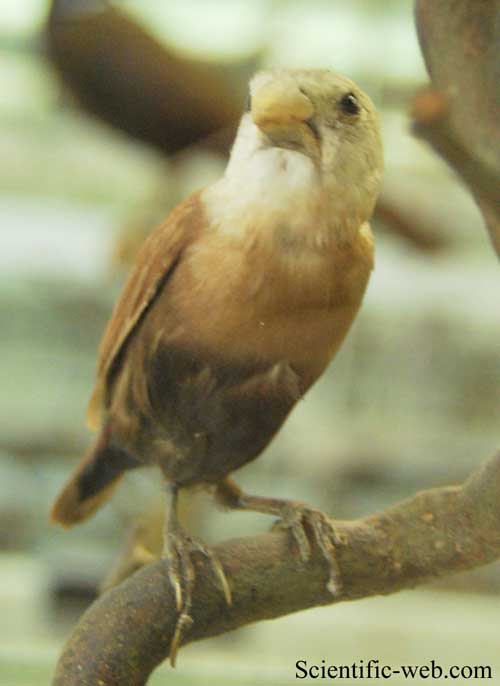Lonchura maja, Photo: Michael Lahanas Cladus: Eukaryota Name Lonchura maja (Linnaeus, 1766) Reference * Syst. Nat. ed.12 p.301 Vernacular names -------- The White-headed Munia Lonchura maja is a species of estrildid finch found in Indonesia, Malaysia, Singapore, Thailand and Vietnam. This species is also introduced to Portugal. It is found in wetlands habitat. The status of the species is evaluated as Least Concern. Description: Smallish (11 cm), white headed brown finch. Similar to chesnut Munia but paler brown and entire head and throat white. Young birds are brown on upperparts with underparts and face buff. Iris-brown; bill-grey; feet-pale blue. Voice: high-pitched 'pee-pee' Distribution and status: malay peninsula, Sumatra, Java, Bali and Celebes. In Java and Bali this is a fairly common and widespread bird up to 1500 m. Habits: frequents marshes and reedbeds. Like other munias form large flocks during rice harvest but spread out in pairs during breeding season. General behavior similar to other munias. Diet: Rice and Grass seeds. Breeding: Four to five, occasionally six, white eggs are laid in a typical munia ball-shaped grass nest. Breeding is recorded in West Java for February. Race; L.m. leucocephalus References * BirdLife Species Factsheet
Source: Wikispecies, Wikipedia: All text is available under the terms of the GNU Free Documentation License |
|

